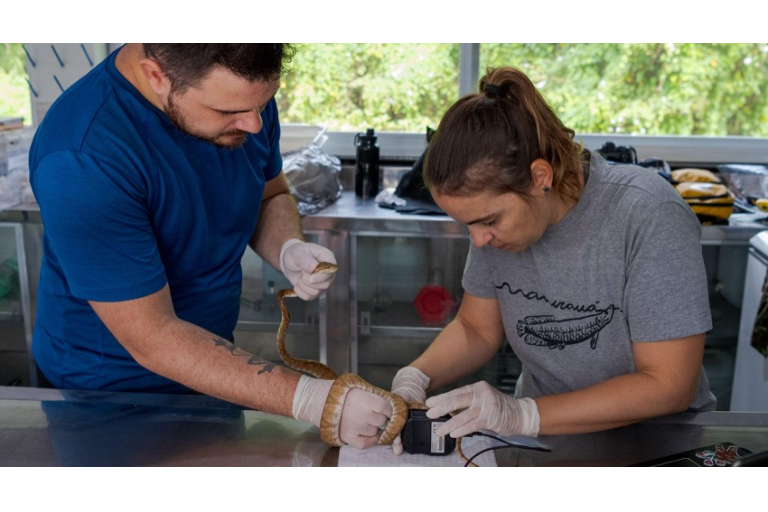Researchers in Brazil’s Amazonas state are testing easy-to-use scanners that can help them identify animal species they come across in the wild, Mongabay contributor Miguel Monteiro reported in June. The scanners use a technology called near-infrared spectroscopy (NIRS), which currently has many applications, from measuring food quality to monitoring blood oxygen levels in the medical field. The idea is simple: A portable NIRS scanning device emits near-infrared light onto an animal’s body surface. Some of the light is absorbed while some gets reflected. The device measures the reflected light, producing a “spectral signature,” unique to each species, like a fingerprint. To get to the final step of identifying species using the scanner, researchers first need to build a robust reference database linking each species in its environment to its spectral signature. Kelly Torralvo, a senior researcher in the Terrestrial Vertebrates Ecology Research Group at the Mamirauá Institute, is working to build such a database for reptiles and amphibians of the Mamirauá Sustainable Development Reserve in Brazil’s Amazonas state. Every night, Torralvo sets out with her flashlight, searching for herpetofauna among branches and leaves. Whatever she finds, she brings back to her field base’s laboratory within the reserve. There, Torralvo uses a device to scan each animal and detect its “spectral signature” using NIR technology. Torralvo co-authored a study in 2023 in which the researchers showed that NIRS technology could identify five out of the eight amphibian species they tested, with an 80% reliability, using only one spectral reading per individual.…This article was originally published on Mongabay
Search
Recent Research
Want your Blog Article featured on our website?
Research
Featured News
Explaining Katsina’s Massive Leap to 2nd Position in the 2025 Climate Governance Ranking
In 2024, during the first edition of the Subnational Climate Governance Performance Rating and Ranking,
COP30: Firm to connect institutions with international climate finance opportunities
SISTME, a climate change and biodiversity conservation consulting firm based in Argentina, has offered to
From resistance to planetary governance, Indigenous women redefine global climate action
While world leaders negotiate behind closed doors in the Blue Zone of COP30, Indigenous Women
Sahara Group Foundation launches 16th Sahara Go Recycling Hub to boost environmental sustainability, economic empowerment
Sahara Group Foundation, the corporate social impact arm of Sahara Group, has commissioned its 16th
Climate finance is the lifeblood of climate action – Simon Stiell at COP30
Remarks delivered by UN Climate Change Executive Secretary, Simon Stiell, at the third High-Level Ministerial
UNDP, REA, GEF commission Plateau solar mini-grid to power agricultural value chains, empower rural communities
The United Nations Development Programme (UNDP), in partnership with the Rural Electrification Agency (REA) and
COP30: Africa urges world leaders to turn pledges into action
Africa has called on the world leaders to turn their pledges into action regarding the
Thousands join global marches calling on govts at COP30 to deliver climate justice
An estimated 30,000 people marched through the Brazilian city of Belém on Saturday, November 15,


